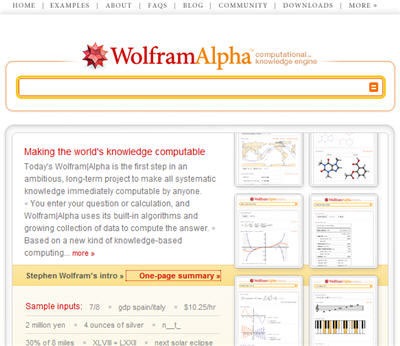


(Wolfram Physics Project) So is it time to get excited? Space may be a complex mesh of points connected by a simple rule that is iterated many times. If we can build a geometry that resembles the one given to us by general relativity using a discrete structure, then the prospects look even better. If we can build a theory that can do what general relativity does but that starts from discrete structures like graphs, then the prospects for reconciling general relativity and quantum mechanics start to look more promising. General relativity, on the other hand, treats the universe as a continuum and gravity as a continuous force. How can complicated meshes of nodes help with the project of reconciling general relativity and quantum mechanics? Well, quantum theory deals with discrete objects with discrete properties.
Wolframalpha series series#
He maintains that space itself can be thought of as a mesh that knits together a series of nodes in this fashion. Wolfram argues that extremely complex graphs resemble surfaces and volumes: add enough nodes and connect them with enough lines and you form a kind of mesh. For instance, imagine a cube and a graph that resembles it.Ībove: In the same way that a collection of points and lines can approximate a solid cube, Wolfram argues that space itself may be a mesh that knits together a series of nodes. Key to his suggestion is that a suitably complicated graph looks like a geometry.

The goal of physics, he suggests, is to work out the rules that the universal graph obeys. Wolfram's proposal is that the universe can be modelled in much the same way. Keep applying the rule and, pretty soon, the network of friends forms a complex graph.Ī simple rule multiple times creates a complex network of points and connections. Apply the rule again to every person (including the one you started with, namely: Betty). Apply the rule to Betty: now she has three friends. Next, add a simple rule: every person adds three friends. He does so via a branch of mathematics called graph theory, which studies groups of points or nodes connected by lines or edges. Wolfram is attempting to provide an alternative to string theory. This theory has been a work in progress for 50 years or so, and while it has achieved some success there is a growing dissatisfaction with it as an approach. The current best approach we have to quantum gravity is string theory. This has led to a quest for the holy grail of physics: a theory of quantum gravity, which would combine what we know from general relativity with what we know from quantum mechanics to produce an entirely new physical theory. General relativity "breaks down" when we try to extend it into the miniature realm where quantum mechanics rules. While we have an excellent theory of how gravity works for large objects, such as stars and planets and even people, we don't understand gravity at extremely high energies or for extremely small things. These are general relativity – a theory of gravity and the large-scale structure of the Universe – and quantum mechanics – a theory of the basic constituents of matter, sub-atomic particles, and their interactions.

Why do we need such a theory? After all, we already have two extraordinarily successful physical theories. The guiding idea is that everything can be boiled down to the application of simple rules to fundamental building blocks. The new physics, he declares, is computational. Last week, Wolfram launched a new venture: the Wolfram Physics Project, an ambitious attempt to develop a new physics of our Universe.


 0 kommentar(er)
0 kommentar(er)
